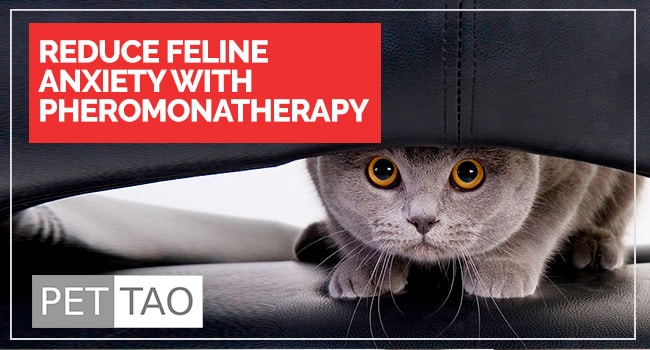What should you do about your stressed cat?
Imagine this: You and your girlfriends are having a movie night.
You open a nice bottle of wine, make some popcorn, and settle into the sofa.
Then, out of nowhere, your cat comes flying at your friend Jen, scratching her face.
How embarrassing! And, it isn’t the first time.
Three Observable Stress Symptoms in Anxious Housecats
1. Marking Territory
Cats use visual and scent signals to mark their territory. They can become territorial due to changes in the environment, such as visits to the veterinarian, moving to a new home, and even rearrangement of furniture.
Cats will spray urine or scratch to mark their territory. These are normal behaviors but may signify stress.
2. Withdrawal, Hiding, Reduced Activity in Cats
If your anxious house cat hides under the bed, on top of the cabinets, or in another hard-to-reach place, he is scared.
3. Aggressive/Stressed Cat
The following are offensive or defensive behaviors:
- Batting, swatting with paws
- Biting
- Growling
- Scratching
Additionally, if your cat rolls onto his side or back and exposes his teeth and claws he is preparing to grab and bite.
Pheromonatherapy Reduces Cat Anxiety
Herbs and essences are popular among those who seek natural alternatives for their anxious housecat.
Pheromonatherapy is another growing trend.
Pheromone therapy manages many common stress-related behaviors in pets, without pharmaceuticals or dangerous side effects.
Pheromones Explained
Pheromones, naturally occurring chemicals, communicate between individuals of the same species. The vomeronasal organ, which is part of the olfactory system, detects pheromones. However, pheromones are odorless to people and other animals.
When cats rub their noses on objects in your home they are leaving behind pheromones to mark their territory. Small changes, such as new furniture in your home, prevent your cat from leaving his pheromone. Your cat may feel insecure by his inability to mark his territory, increasing his stress.
Use pheromones therapeutically to restore your cat’s natural balance. Pheromonatherapy uses a substance mimicking cat’s pheromones, providing your cat with a sense of calm.
Pheromonatherapy is often used in conjunction with behavior modification therapy, drug therapy, or essential oils.
How Pheromonatherapy Works on Your Cat
Three options exist for pheromonatherapy: a spray, plug-in, or collar.
Use the spray in locations where the cat is spraying or scratching. Results may not be noticeable for at least a month.
The spray is also good for traveling when applied to carriers or bedding.
The plug-in diffuser makes a great addition to a new environment.
Clinical Research on Pheromonatherapy
In Stress and Pheromonatherapy in Small Animal Clinical Behaviour, Daniel S. Mills, Maya Braem Dube, and Helen Zulch write about the effect of stress on animals and how to use chemical signals to ease stress.
In another study, incidences of urine spraying – both sexual and reactive – reduced after the F3 pheromone was applied to the cat’s environment.
The data, researched by Daniel Mills from the Animal Behaviour Cognition and Welfare Group at the University of Lincoln, was presented at the World Small Animal Veterinary Congress in 1996.








